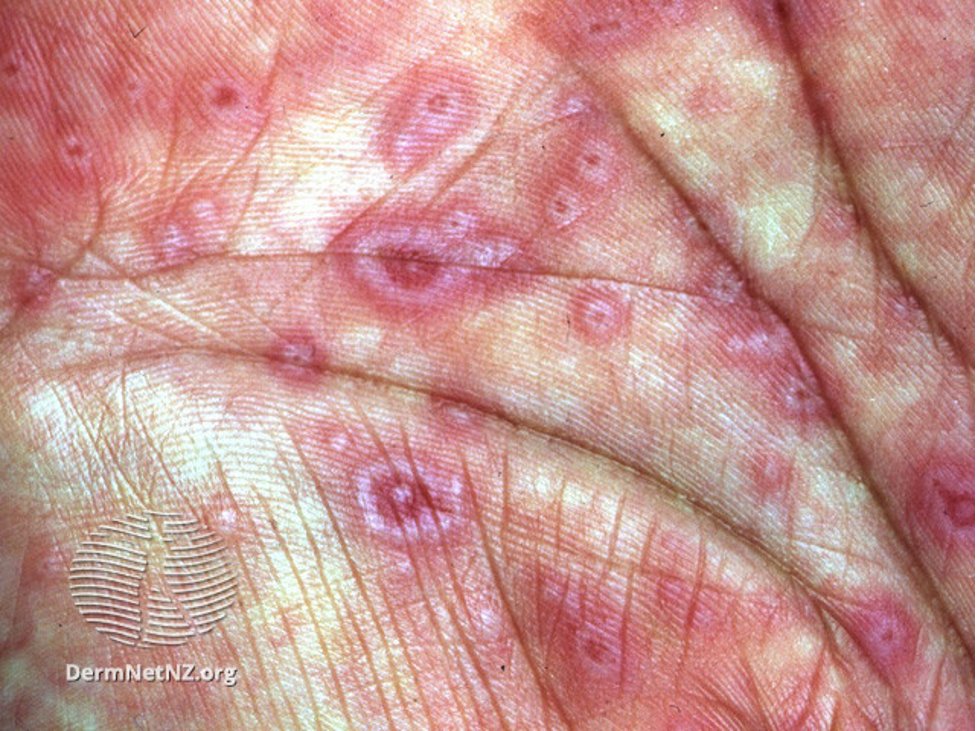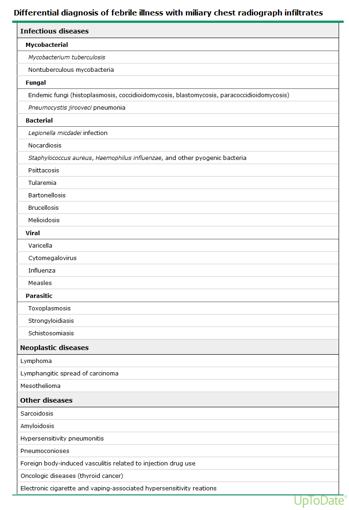1/ Wow, finishing up my last rotation as a 1st year ID fellow on gen ID has been a whirlwind @UNMC_ID! Had an all-star group of faculty (@Cortes_Penfield, @fadul_nada & @DrJRMarcelin) and an amazing group of residents, students & pharmacists! Time to review a month of learning:
2/ Let's start with an unusual one:
Syphilis can be inoculated via tattoos or manifest with a rash within the tattoo in secondary syphilis. This localization is thought to be due to decreased immune response within the tattoo.
pubmed.ncbi.nlm.nih.gov/30363028/
ijam-web.org/article.asp?is…

Syphilis can be inoculated via tattoos or manifest with a rash within the tattoo in secondary syphilis. This localization is thought to be due to decreased immune response within the tattoo.
pubmed.ncbi.nlm.nih.gov/30363028/
ijam-web.org/article.asp?is…


3/ Erythema multiforme has classic target lesions and can cause mucus membrane involvement. Classic triggers are HSV & Mycoplasma pneumoniae. Adenovirus is also associated, especially with ocular & genital involvement.
sciencedirect.com/science/articl…
medicaljournals.se/acta/content/h…


sciencedirect.com/science/articl…
medicaljournals.se/acta/content/h…



4/ When should epidural abscesses be managed surgically vs medically? This algorithm is helpful & includes risk factors for medical failure.
Overall, quality of evidence is poor & its a convo between ID & surgery, often times difficult decisions.
thejns.org/focus/view/jou…
Overall, quality of evidence is poor & its a convo between ID & surgery, often times difficult decisions.
thejns.org/focus/view/jou…

5/ Saw a lot of cross-reactive ID tests this month. Pts with syphilis frequently have positive Lyme serology (73.3% in this series). The opposite of this is not true: pts with Lyme do NOT have +syphilis Ab. Helps there isn't much Lyme in Nebraska too!
sciencedirect.com/science/articl…

sciencedirect.com/science/articl…


6/ More cross-reactions to keep in mind:
IVIG affects many of our serological tests, including beta-D-glucan & Lyme, resulting in false positives!
Also, aspergillus GM is false positive in histoplasmosis!
Be wary of serologies after IVIG administration!
sciencedirect.com/science/articl…
IVIG affects many of our serological tests, including beta-D-glucan & Lyme, resulting in false positives!
Also, aspergillus GM is false positive in histoplasmosis!
Be wary of serologies after IVIG administration!
sciencedirect.com/science/articl…

7/ A new bacteria for me: Acinetobacter radioresistens.
Named because it survived a gamma-radiation sterilization procedure when discovered. Survives in the hospital easily. Resistant to desiccation, H2O2 & UV too.
ncbi.nlm.nih.gov/pmc/articles/P…
Named because it survived a gamma-radiation sterilization procedure when discovered. Survives in the hospital easily. Resistant to desiccation, H2O2 & UV too.
ncbi.nlm.nih.gov/pmc/articles/P…
8/ Interestingly, A. radioresistens carries the blaOXA-23 gene (class D carbapenemase), a key in carbapenem resistance for A. baumannii.
However, A. radioresistens weakly expresses this gene & often is susceptible to all β-lactams, serving as a "silent reservoir" in hospitals.
However, A. radioresistens weakly expresses this gene & often is susceptible to all β-lactams, serving as a "silent reservoir" in hospitals.
9/ Herpes B virus is a common ID board question, but it's a real concern amongst those who are exposed to macaque monkeys, causing a fatal encephalomyelitis. A key resource is the @IDSAInfo guidelines from 2002:
academic.oup.com/cid/article/35…
academic.oup.com/cid/article/35…

10/ Overall risk of transmission is low, but is dependent on the age of the monkey (100% of macaques >2.5 years are seropositive for herpes B) and immune status (more likely to reactivate if immunosuppressed).
PPx: PO valacyclovir
Tx: IV acyclovir or ganciclovir (if CNS)


PPx: PO valacyclovir
Tx: IV acyclovir or ganciclovir (if CNS)



11/ Risk of embolization in endocarditis increases with size of vegetation & the mitral location, especially with Staph aureus. Embolization risk decreases after 2 weeks of antibiotic treatment (65% of emboli occurred within 2 weeks of tx initiation)
sciencedirect.com/science/articl…

sciencedirect.com/science/articl…


12/ A nice review on CIED infections from ESC. Surprised to learn that 46% of patients with pocket infection (w/o BSI) had vegetations detected. In Staph aureus BSI with CIED, mortality is 47.6% without CIED removal at 12 weeks vs 16.7% with removal.
academic.oup.com/europace/artic…

academic.oup.com/europace/artic…


13/ Achromobacter sp. are frequent causes of lung infections in CF, esp post-transplant.
Best drugs for treatment: ceftazidime, pip-tazo, carbapenems, TMP-SMX
If MDR? Colistin, cefiderocol, eravacycline & meropenem-vaborbactam have been tried
pubmed.ncbi.nlm.nih.gov/32816734/
Best drugs for treatment: ceftazidime, pip-tazo, carbapenems, TMP-SMX
If MDR? Colistin, cefiderocol, eravacycline & meropenem-vaborbactam have been tried
pubmed.ncbi.nlm.nih.gov/32816734/

14/ Malaria has been a bit quiescent due to travel restrictions, but cases are being seen again. CDC serves as a great resource with this algorithm & guidance in the US.
cdc.gov/malaria/diagno…
cdc.gov/malaria/diagno…

15/ That concludes a brief summary of the many things I've learned this month, my last as a first year fellow. If other months haven't taught me already, the field of ID is always going to challenge me!
Thanks to the many who have helped along the way!
@ID_fellows
Thanks to the many who have helped along the way!
@ID_fellows
• • •
Missing some Tweet in this thread? You can try to
force a refresh











